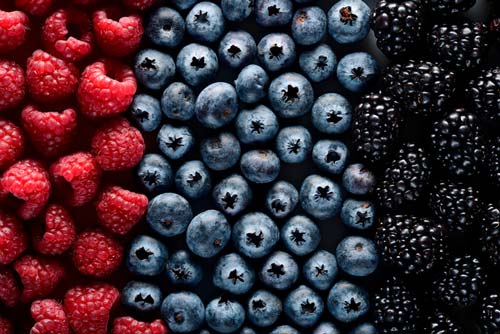You reach the peak of your lung power at about age 30. After that, your breathing becomes less efficient.
And when you don’t get as much vital oxygen, your entire body starts to age.
But a new study shows one group of compounds staves off lung aging.
They’re called anthocyanins. They’re beneficial plant pigments that give fruits and vegetables a deep red, purple, or blue color. So think berries or naturally purple-colored vegetables.
Anthocyanins are part of a larger group of beneficial plant molecules called flavonoids. Previous studies show they increase aerobic performance and maximize oxygen consumption.1 2
New research at the Johns Hopkins Bloomberg School of Public Health looked at people who ate the most foods with anthocyanins.3
Subjects included 436 adults from Norway and England. Their average age at the start of the study was 44.
They completed dietary questionnaires and a lung function test. Ten years later, their lung function was tested again.
Researchers found a strong relationship between anthocyanin consumption and lung health. The more deeply pigmented produce people ate, the better their lung health.
Dr. Vanessa Garcia-Larsen led the study. She’s an assistant professor of human nutrition at Johns Hopkins.
She explained that lung decline varies from person to person. It depends on factors such as smoking, physical activity, exposure to pollutants, and medical conditions.
But overall, people who ate large amounts of dark-colored fruits and vegetables had better lung health as they aged.
“Foods rich in anthocyanin flavonoids might protect the lungs through their antioxidant and anti-inflammatory properties,” Dr. Garcia-Larsen said.
Anthocyanin levels in lung tissue are higher just a few hours after eating foods such as berries, she said. This “suggests that [anthocyanin-foods] might have a functional role in protecting the lungs against the pollutants and other environmental insults,” such as smoking, she said.
So which foods should you eat to make sure you’re getting plenty of anthocyanins?
5 Fruits and Vegetables Rich in Anthocyanins
- Blackberries
- Blueberries
- Currants
- Red Cabbage
- Black plums
Anthocyanins are also abundant in red grapes, red raspberries, and pomegranates… really any fruits and vegetables with deep purple, red, or blue hues.
Increase your levels of the vital compound by blending a handful of dark berries into a fruit smoothie or yogurt. Add red cabbage to salads.
You can also get anthocyanins in supplement form. Look for blueberry, tart cherry and other dark berry extracts online and in health food stores.
One more thing… Beets are one of the most deeply colored vegetables. Their color comes not from anthocyanins but from another group of plant chemicals called betalains. Like anthocyanins, they may help your lungs.
Beet juice is linked to improved athletic performance and increased blood flow to the brain.4 5 6
Editor’s Note: Recent studies show that the symptoms of aging are just like any others. They can be treated or eliminated. Go here to discover specific ways you can stop the clock – and even turn it back.
Like this Article? Forward this article here or Share on Facebook.
References:
1 https://www.ncbi.nlm.nih.gov/pmc/articles/PMC4336991/
2 https://en.wikipedia.org/wiki/Anthocyanin
3 https://consumer.healthday.com/respiratory-and-allergy-information-2/misc-respiratory-problem-news-580/berries-and-grapes-may-keep-you-breathin-easy-734092.html
4 https://www.ncbi.nlm.nih.gov/pubmed/23580439
5 https://www.ncbi.nlm.nih.gov/pubmed/20951824
6 https://www.bbcgoodfood.com/howto/guide/what-are-anthocyanins-and-why-are-purple-foods-so-healthy

